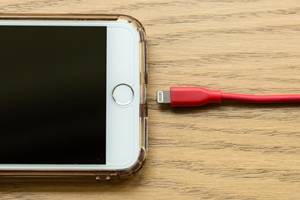Posted by: TAZ Networks on June 7, 2019 at 12:00 pm

Think before you connect! Juice jacking could potentially steal your data.
Juice jacking is a potential security risk you may not have considered before.
We’ve all been in this situation: out and about, getting things done, when that little battery indicator on the phone switches from white to red. Low battery.
But there, in the distance… is it? YES. It is a USB port, ready and waiting for you to plug in your phone for that sweet, sweet power we all want and need.
Oh, but not so fast. What’s behind that USB port?
You might be thinking, “What on earth are you talking about? Electricity is behind that USB port.”
And, indeed, it is. But what else?
Since 2011, cybersecurity experts have warned the public about potential security risks from using public USB charging ports. This idea, dubbed “juice jacking,” comes from the fact that most device charging ports can also transmit data from the device to an attached computer. If a hacker were to attach a computer to the hidden side of the charging port station, that computer could steal data, contacts, or other information. As well, it could send malicious code or apps to the device while it charges.
In the years since, other researchers have added validity to this risk by demonstrating software or hardware connections that can actually infect or steal from USB-connected devices.
How to Protect Your Device From Juice Jacking
While we couldn’t locate any stories of a security breach from juice jacking, the potential risk is real.
So, how can you protect the data on your phone or tablet from being swiped by a hacking device disguised as a USB port?
- Keep your phone charged. (Well, duh.) Keeping your phone plugged into a known, safe port (your own laptop or car charger, for example) whenever available reduces the odds of it losing power entirely while out and about.
- Use an outlet. Only electricity, not data, flows through power lines. Therefore, using a good old wall plug is a safe way to charge your phone in public. Yes, this means you have to make sure to have a charging cable and USB adapter with you all the time, or know where to purchase one.
- Carry a spare battery or personal charger. Some phones still allow swappable batteries. If yours does, keep a charged spare with you on the road. If not, many retailers sell pre-charged power banks… but you’ll probably need your own cable.
- If you must use a public USB port, power down your phone completely.
We’re not convinced that juice jacking attacks are happening in the wild, but it is possible. Stay alert and stay safe!
Image via Pixabay.